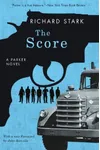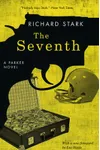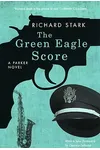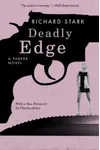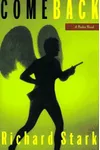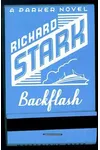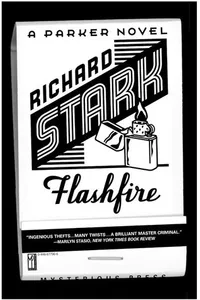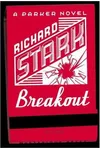Step into the gritty, pulse-pounding world of Parker, where heists go wrong, betrayals sting, and a cold-blooded thief always gets his due! The Parker series, crafted by Donald E. Westlake under the pseudonym Richard Stark, follows a ruthless professional criminal through 24 novels of hardboiled crime fiction. With lean prose and an unflinching antihero, this series has carved a legendary niche in the genre, captivating readers with its raw intensity.
Unlike your typical charming rogue, Parker is all business—no first name, no backstory, just a relentless drive for money and survival. From its 1962 debut to its enduring legacy, the series blends meticulous plotting with brutal consequences, making it a must-read for crime fiction fans.
How Parker Began
In the early 1960s, Donald E. Westlake, a prolific New York writer, sought a darker outlet for his craft. Under the pen name Richard Stark—inspired by actor Richard Widmark’s chilling performance in Kiss of Death—he created Parker, a thief who embodied raw efficiency. Westlake’s goal was simple: strip away sentimentality for a character who lived in the moment, driven by necessity. The first novel, The Hunter (1962), was meant as a standalone, but its success sparked a series that spanned decades, with Westlake penning 16 novels by 1974 and eight more from 1997 to 2008.
The Heart of Parker
The series kicks off with The Hunter, where Parker seeks revenge after a double-cross leaves him for dead. Its taut narrative sets the tone for the series’ signature structure: four-part novels blending heist planning, execution, betrayal, and retribution. The Outfit (1963) sees Parker take on an entire crime syndicate, showcasing his strategic brilliance. Slayground (1971) traps him in a closed amusement park, fighting off corrupt cops and mobsters in a tense, Die Hard-esque showdown. Butcher’s Moon (1974), the longest novel, delivers an epic gang war as Parker reclaims what’s his.
Parker’s world is a shadowy underbelly of 1960s and ’70s America, with New York City as a frequent backdrop. Themes of loyalty, betrayal, and survival dominate, wrapped in Westlake’s stark, economical prose that mirrors Parker’s no-nonsense ethos. Unlike traditional heroes, Parker lacks warmth or redemption, yet his professionalism and ethical code—never double-cross a partner unless they betray first—make him oddly compelling. The series’ procedural detail, from lock-picking to getaway routes, immerses readers in the criminal mind.
Why Parker Resonates
The Parker series redefined hardboiled fiction, inspiring writers like Lee Child, whose Jack Reacher echoes Parker’s lone-wolf intensity, and Dan Simmons, who paid homage with his Joe Kurtz novels. Its influence extends to film, with adaptations like Point Blank (1967) starring Lee Marvin and Payback (1999) with Mel Gibson capturing Parker’s icy resolve (though often under different names due to Westlake’s strict adaptation rules). Graphic novels by Darwyn Cooke brought Parker’s retro grit to vivid life, earning critical acclaim. Fans cherish the series for its unapologetic dive into amorality, offering a thrilling escape into a world where rules are few and stakes are high.
- Publication Years: 1962–2008
- Number of Books: 24 novels
- Notable Adaptations: Point Blank (1967), Payback (1999), graphic novels by Darwyn Cooke
- Awards: Westlake named Grand Master by Mystery Writers of America (1993)
Ready to meet crime fiction’s ultimate antihero? Grab The Hunter and dive into Parker’s relentless world of heists and vengeance!




